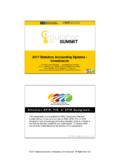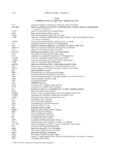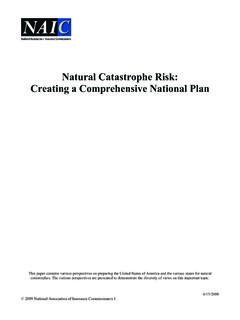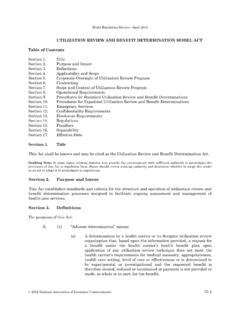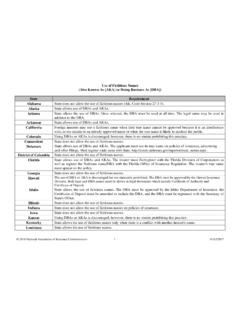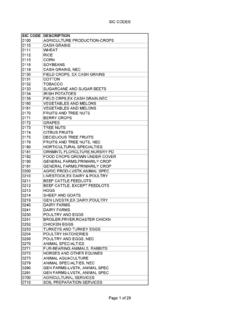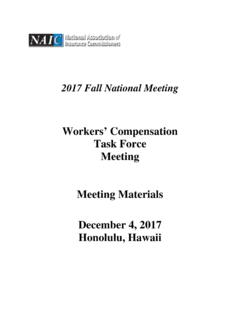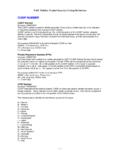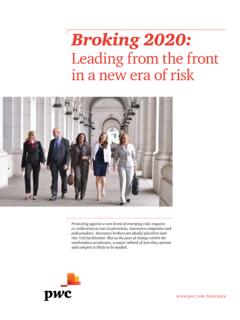Transcription of National Association of Insurance Commissioners - naic.org
1 NAICNo-Fault Auto Insurance :A SurveyPROPERTY & CASUALTYINSURANCE (C) COMMITTEEN ationalAssociation ofInsuranceCommissioners2000No-Fault Auto Insurace: A SurveyPROPERTY & CASUALTYINSURANCE (C) COMMITTEED ecember 2000 NAICN ational AssociationOf Insurance Commissioners Copyright 2000 by National Association of Insurance CommissionersAll rights 0-89382-743-6 National Association of Insurance CommissionersPublications Department816-783-8300 Fax in the United States of AmericaExecutive HeadquartersSecurities Valuation OfficeFederal & International Relations2301 McGee Street Suite 8007 World Trade Center, 19th FloorHall of States City, MO 64108 New York, NY 10048444 North Capitol NW, Suite 701816-842-3600212-285-0010 Washington, DC 20001-1512202-624-7790 2000 National Association of Insurance CommissionersTable of ContentsINTRODUCTION.
2 1 EARLY CONCEPT OF AUTOMOBILE Insurance ..1 HISTORY OF NO-FAULT NO-FAULT ..6 CONNECTICUT ..7 DISTRICT OF ..11 KANSAS .. JERSEY ..19 NEW ..23 PUERTO OF EXISTING LITERATURE ON NO-FAULT AND OTHER AUTOMOBILE INSURANCESYSTEMS ..27 CRITICS OF TORT REPARATION SYSTEMS ..27 INDEPENDENT QUANTITATIVE RESEARCH ..28 Findings Using Historical Data ..28 Simulation Results ..30 CONCLUSION ..31 REFERENCES ..32 2000 National Association of Insurance Commissioners 2000 National Association of Insurance Commissioners1No-Fault Auto InsuranceIntroductionIn 1997, the National Association of Insurance Commissioners ( naic ) decided to study theconcept of no-fault auto Insurance . The naic s Property and Casualty Insurance (C) Committeewas asked to study the concept of no-fault auto Insurance and consider drafting optional modellaws to implement a choice no-fault system, a pure no-fault system, a verbal threshold no-faultsystem and monetary threshold system.
3 1 The committee received its study outline on March 19,1997 and proceeded with the study. This paper presents the committee s findings relative to past several decades have seen a growing interest in developing a possible alternative to thetort system as a way of providing reparations in many of today s automobile accident evidence and reports in the popular press have raised several issues regarding the useof tort remedy in automobile Insurance systems which have led to continual efforts to find aworkable alternative. No-fault Insurance and, more recently, Auto choice Insurance systems havebeen offered as solutions to perceived shortcomings of the tort based system. In the pages thatfollow, the history of no-fault Insurance is developed. A state by state review of current modifiedno-fault systems is then presented.
4 A review of studies done on the effectiveness of alternativeautomobile Insurance systems is then Concept of Automobile InsuranceHenry Ford s mass production of economical automobiles brought about a revolution inAmerican travel options. Along with it came some problems that each American must face whenchoosing to own an automobile. First, motor vehicles represent a significant financialinvestment. This is as true today as it was when the automobile first appeared on the scene. Thus,since its invention, automobile owners have sought to purchase Insurance coverage to protectagainst economic loss to the vehicle. However, damage to the vehicle is not the most significantthreat to its owner. In spite of a person s best intentions, the propensity of drivers to run intoother autos, stationary objects and pedestrians causes a significant exposure to financial loss.
5 It isthis threat to the economic assets of the negligent person that is the subject of auto liabilityinsurance. Further, many states require the purchase of auto Insurance as a measure of financialresponsibility to protect other motorists and pedestrians from unintended the turn of the century, the Industrial Revolution had led the American court system toabandon the traditional absolute liability system in favor of a less stringent tort liability tort system provides a way in which the courts assign negligence or blame to a person calledthe tortfeasor. Black s Law Dictionary defines a tort as a private or civil wrong or injury,including action for bad faith breach of contract, for which the court will provide a remedy in theform of an action for damages.
6 A violation of a duty imposed by general law or otherwise uponall persons occupying the relation to each other which is involved in a given transaction. Theremust always be a violation of some duty owing to a plaintiff, and generally such duty must ariseby operation of law and not by mere agreement of the parties. (Black, 1991, p. 1036). Atortfeasor is held responsible only if he or she is determined by the court to have caused the 1 1997 naic charges to the Personal Lines Property and Casualty Insurance (C) Committee. 2000 National Association of Insurance Commissioners2injury or damage and was guilty of wrongdoing or fault, unless a form of strict or absoluteliability , a person who owns or operates an automobile faces the possibility of being sued for injuryor damage because of his or her negligence in operating the vehicle.
7 Many people choose topurchase liability Insurance to protect themselves from financial loss because of negligentoperation of an It is important to note that the purpose of liability Insurance is toprotect the assets of the purchaser, not to compensate the accident victim irrespective of thepercentage of legal liability involved. The concept of fault and damage contribution arerelated in complex ways that vary from state to state. Thus, there are times where an insurersuccessfully defends a policyholder and no benefits are provided to an accident Insurance industry was quick to respond to the changing needs of the American public. TheTravelers Insurance Company first provided auto liability Insurance in Others soonfollowed.
8 Today, most auto Insurance policies are sold as a package of coverages that provideboth first and third party benefits. An auto Insurance policy is one that is purchased by thepolicyholder (first party) from the insurer (second party) that pays benefits to either thepolicyholder or covered injured person (third party). Comprehensive coverage is not fault , medical benefits are typically applied to drivers and passengers of the insured autoregardless of fault. Finally, uninsured motorists coverage and underinsured motorists coverageare paid to the policyholder based on the relative fault or lack of financial resources of the personresponsible for the accident. Thus, an auto Insurance policy typically delivers both fault and no-fault benefits.
9 The liability portion of the policy provides for damages to injured third parties ifthe policyholder is determined to be negligent or at-fault. It also provides defense costsassociated with litigating or settling the claim for of No-Fault CoverageThe concept of no-fault auto Insurance is not new. It can be traced as far back as the 1930s to theColumbia University Committee Plan (Columbia, 1932). This plan proposed a schedule of out-of-pocket loss benefits similar to the workers compensation coverage in place at the time. It alsohad limitations on liability. Auto Insurance was mandatory with accidents settled without adetermination of fault. Recoveries for pain and suffering were was Canada that first adopted a no-fault plan. The Saskatchewan Plan was adopted in Saskatchewan Plan was based primarily on the Columbia University Committee were provided to almost all victims of auto accidents regardless of fault.
10 The plan wasmandatory and auto owners were required to purchase liability coverage for amounts above thebasis no-fault limits. Another feature required the purchase of physical damage coverage for bothcollision and the United States, no-fault again became topical in the late 1950s and early 1960s whenRobert E. Keeton, Harvard University Professor of Law, and Jeffrey O Connell, University ofIllinois Professor of Law, wrote extensively on the topic and appeared before and interacted withstate legislatures. To address what they perceived to be shortcomings in the auto Insurance 2 In fact, for 1998, auto Insurance is compulsory in 43 states and the District of Columbia (Gastel, 1998).3 The first auto bodily injury liability policy written in the United States was issued to Dr.
